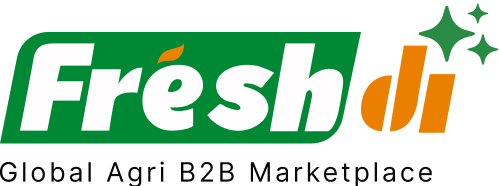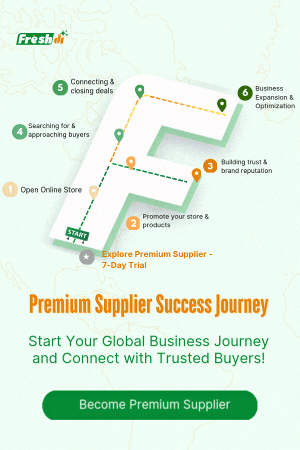Introduction – The Current State of Play: The Fresh Vegetables Sector in Ukraine
If you’re sourcing fresh vegetables from Ukraine right now, you’re navigating a minefield of policy changes, climate challenges, and shifting market dynamics. As of October 2025, the Ukrainian fresh vegetable industry stands at a critical inflection point—facing both new opportunities and complex hurdles that demand fast, informed decisions.
Let’s unpack what’s happening.
After a period of tariff waivers, the European Union has reinstated its pre-war trade framework with Ukraine, effectively bringing back tariffs and quotas on agricultural imports. The goal? Protect EU farmers from being undercut by Ukrainian produce. This affects everything from carrots to cabbages, and it’s already reshaping export strategies for Ukrainian suppliers.
Meanwhile, Ukraine introduced minimum export prices in late 2024, which means fresh vegetable exporters can’t sell below government-set price floors. This is a direct attempt to stabilize markets and prevent undervaluation—but it also creates new pricing pressure for buyers.
Then there’s the weather. Ukraine’s southern regions, especially Odesa and Kherson, are feeling the heat—literally. Rising temperatures and recurring droughts are threatening yields. And with the fall season in motion, cloudy skies and cooler temperatures across Kyiv, Lviv, and Odesa are affecting harvest timelines and produce quality.
Add to that the post-holiday trade surge in early 2025—where we saw a spike in carrot prices and increased activity in onions, cabbage, and potatoes—and it’s clear: the Ukrainian fresh vegetable market is dynamic, unpredictable, and evolving fast.
In short, if you’re in the game, you need to stay agile. And that’s where platforms like Freshdi come in—offering verified supplier data, up-to-date RFQ trends, and sourcing strategies aligned with real-time developments.
Deep Dive – Breaking News: Critical Updates & Their Effects
While no groundbreaking tech or investment announcements have hit the headlines this month, the regulatory and trade policy shifts are so significant, they’re effectively rewriting the rules of engagement for anyone sourcing fresh vegetables from Ukraine.
The return of EU tariffs is forcing Ukrainian exporters to rethink routes and pricing. Many are starting to pivot toward non-EU markets or are restructuring deals to stay competitive within the bloc despite the new barriers.
Meanwhile, the minimum export pricing policy is acting as a double-edged sword. On one hand, it’s raising the floor for profitability; on the other, it’s narrowing the deal-making flexibility that buyers often rely on during negotiation.
These factors have created a ripple effect across the supply chain. Exporters are now more selective, logistics partners are recalibrating cost models, and buyers—especially in Europe—are re-evaluating their sourcing terms.
Top 6 Verified Fresh Vegetables Suppliers in Ukraine – Adapting to Today’s Market
So, who are the suppliers that are not just surviving but thriving amid all these changes?
Based on export volumes, Freshdi buyer reviews, market agility, and certifications, here are the Top 6 Fresh Vegetables Suppliers in Ukraine in August 2025 that you should know:
- Medhat
- Known for high-quality root vegetables.
- Adapting quickly to EU tariff changes with diversified export strategies.
-
Strong track record in meeting minimum export price regulations.
- Offers a wide range of greenhouse vegetables including cucumbers and tomatoes.
- Notable for consistent quality even amid climate stress.
-
Frequently featured in Freshdi’s “Suppliers of the Month.”
- Focused on bulk export of onions and white cabbage.
- Excellent logistics network across Europe and Central Asia.
-
Highly rated for compliance with new pricing regulations.
- Specializes in carrots and potatoes.
- Leveraging Freshdi’s insights to adjust to real-time RFQ trends.
-
Responsive to buyer requests for traceability and certifications.
- Diversified product portfolio and strong EU buyer base.
- Proactive in managing quota reallocation strategies post-tariff reinstatement.
-
Known for robust food safety standards.
- Nimble and responsive supplier of both conventional and organic produce.
- Frequently collaborates with buyers on seasonal planning.
- Strong reviews for communication and reliability on Freshdi.
Dynamic Ranking Note: Keep in mind, supplier rankings can shift monthly or quarterly based on export volumes, buyer feedback, and market responsiveness. Platforms like Freshdi regularly highlight “Suppliers of the Month” based on these dynamic metrics—so check in often.
Market Navigation – Strategic Responses to Today’s Fresh Vegetables Landscape in Ukraine
Let’s talk tactics.
With tariffs back on the table and export pricing floors in place, buyers need to rethink their approach. Here are a few strategies that smart sourcing teams are already implementing:
1. Diversify Your Supplier Base
Don’t rely on one supplier—especially now. With uncertain yields due to climate volatility, it’s safer to spread your orders across multiple verified partners like Ultraexim LLC and PE RATNIKOVA, who specialize in different crops and regions.
2. Adjust Product Focus Based on Pricing Trends
Carrot and onion prices are rising, but tomatoes are dropping. If you’re looking for cost-efficient sourcing, now might be the time to pivot toward tomatoes or greenhouse cucumbers from suppliers like LITKOV.
3. Prioritize Logistics-Ready Partners
With weather disruptions threatening timelines, work with suppliers who already have proven logistics operations. Kiev Food Export and Medhat are solid bets—both known for meeting tight delivery schedules.
4. Monitor RFQ Shifts with Freshdi
Freshdi’s analytics tools help you detect changes in demand across regions and categories. This helps you place smarter bulk orders and avoid overpaying during peak price windows.
5. Re-Evaluate EU-Focused Supply Chains
With new tariffs in play, some buyers are exploring alternative markets or adjusting their EU strategies. Suppliers like MAYDEX AGRI are already adapting to this—offering flexible terms for non-EU buyers.
Conclusion – Key Takeaways for Businesses in a Rapidly Evolving Market
Ukraine’s fresh vegetables market is no longer business as usual—it’s evolving fast, shaped by policy shifts, climate realities, and price dynamics.
Here’s what we know:
– EU tariffs are back, driving up costs for European buyers.
– Minimum export pricing is creating a new playing field for negotiations.
– Weather conditions are threatening yields, especially in Odesa and Kherson.
– Price shifts are creating both risks and opportunities across vegetable categories.
To stay competitive, businesses must act quickly, make data-driven decisions, and partner with suppliers who are adapting in real time.
That’s where Freshdi becomes essential. With its supplier verification system, market trend dashboards, and real-time RFQ tracking, Freshdi empowers buyers to navigate uncertainty with confidence.
Key Takeaways:
- Stay updated on EU-Ukraine trade policy changes.
- Track price trends for different vegetables—carrots up, tomatoes down.
- Use platforms like Freshdi to find verified, agile suppliers.
- Diversify sourcing to manage climate and logistics risks.
- Adapt product focus based on seasonal and market shifts.
Checklist for Buyers Sourcing Fresh Vegetables from Ukraine (August 2025)
- ✅ Confirm supplier compliance with minimum export pricing.
- ✅ Check Freshdi for recent “Supplier of the Month” updates.
- ✅ Evaluate logistics capabilities amid climate risks.
- ✅ Prioritize RFQ categories with favorable pricing trends.
- ✅ Monitor EU trade policy updates affecting quotas/tariffs.
Future Outlook
Looking ahead, we can expect additional adjustments in Ukraine’s agricultural export policies, particularly as the country continues negotiating with the EU. Climate change will remain a factor, pushing innovation in greenhouse and drought-resistant farming methods.
Buyers who stay connected to real-time insights—especially through platforms like Freshdi—will be best positioned to ride the wave, rather than get caught under it.
FAQs
1. How are EU tariffs affecting fresh vegetable exports from Ukraine in 2025?
Tariffs and quotas have been reinstated, increasing costs for European buyers and pushing Ukrainian suppliers to seek alternative markets or adjust pricing.
2. What vegetables are seeing the biggest price changes?
Carrots, onions, and white cabbage are trending up in price, while greenhouse tomatoes have seen a price drop.
3. How does Freshdi help buyers in the current market?
Freshdi provides verified supplier data, real-time RFQ trends, and alerts on market changes, helping buyers make smart, timely sourcing decisions.
4. Which regions in Ukraine are most affected by climate issues?
Southern regions like Odesa and Kherson are seeing the biggest impact from droughts and rising temperatures, affecting crop yields.
5. Are there any suppliers particularly known for reliability during market shifts?
Yes! Suppliers like LITKOV, Ultraexim LLC, and Kiev Food Export are noted on Freshdi for their adaptability, logistics strength, and buyer satisfaction.
References
- EU agrees initial food trade deal with Ukraine
- Ukraine introduces minimum export prices for major agricultural goods
- Ukraine plans to boost food processing as preferential EU trade ends
- Post-holiday trade rises with price shifts led by Ukraine
- Ukraine’s climate change impact on agriculture


